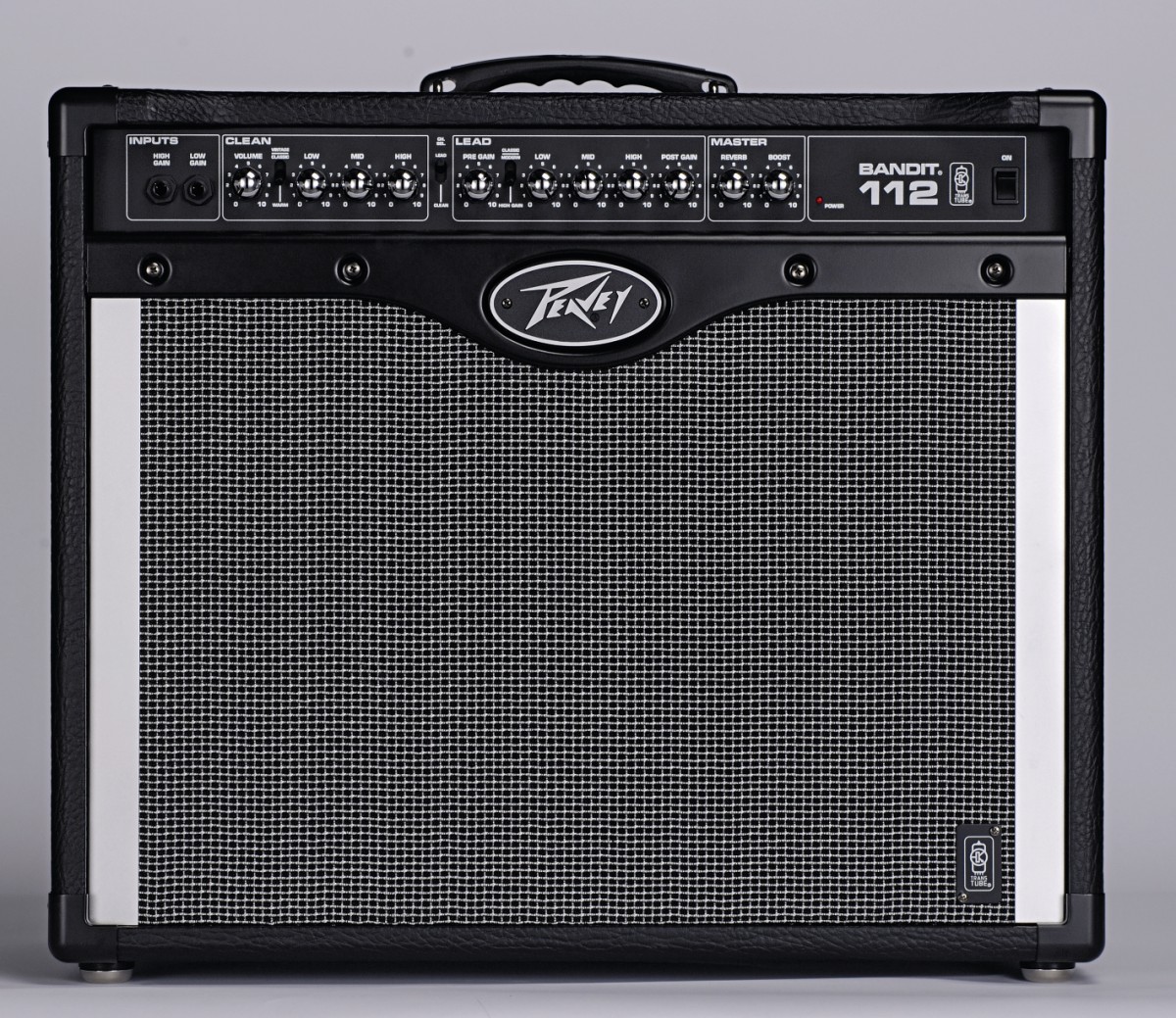MusicRadar Verdict
A solid choice for anyone gigging or rehearsing at the louder, rockier end of the spectrum.
Pros
- +
Versatile range of drive sounds. Enough power for gigs. 12-inch driver delivers plenty of bottom-end.
Cons
- -
No onboard effects.
MusicRadar's got your back
Almost all guitarists will have encountered a Peavey Bandit at some point in their playing career. Many a player's first gigging amp, the mere mention of the model's name is enough to make even the most grizzly rocker misty eyed with nostalgia. Happily, the current version looks well-equipped to continue the tradition.
It's easy for players who have spent thousands on all-valve backline to sneer at amplifiers such as this, but for aspiring younger guitarists looking for an amp with which to cut their gigging teeth, or any player on a tight budget, they more than fit the bill.
The Bandit 112 is substantial but not particularly heavy and could easily cope with being transported to that pub gig or garage rehearsal via nothing more spacious than a car seat.
Open back construction also allows for a lead and a couple of pedals to be stowed relatively safely, if you wish. The Chinese construction is efficient, neat and entirely consistent with similarly priced products.
Clean and lead channels are equipped with independent three-band EQ sections allowing for more precise adjustment than a shared configuration.
The clean channels don't have separate volume and gain pots, but the vintage/classic/warm switch means that you should be able to get a little break-up and warmth at less than excruciating volume levels.
The Bandit also benefits from a three-position voicing switch on its lead channels. The classic/modern/high gain demarcations are self-explanatory and allow you to dial in a variety of overdriven tones.
In the master section, reverb level is global so setting the right amount for both the clean and lead channels will require something of a balancing act, while the boost control functions like a master volume unless the footswitch is utilised, when it offers up to an extra 10dB volume hike that is ideal for solos or big riffs.
On top of that, the Bandit has some useful extras which aid performance and dynamic response. A variable power level switch attenuates the output power to either 25 or 50 per cent, which is useful should you find yourself in an environment where the full wattage is a little excessive, or more break-up is required from the clean channel.
Similarly, the loose, medium and tight damping settings are worth experimenting with, particularly for higher-gain overdriven rhythm sounds.
The Bandit lacks a headphone out, but instead features a level control for its direct output, allowing you to feed a mixer just the right level to avoid any ugly clipping.
Sounds
The Bandit's clean channel is exactly what one might expect from a decent modern transistor amp, being well-balanced and fairly neutral, allowing the character of the instrument to come through.
If you like your cleans with a smidgen of valve-like grit we'd recommend looking elsewhere, but fans of Nile Rodgers-style percussive funk or country pickers will find plenty to like.
The digital reverb is pretty convincing and provides a close approximation of an analogue spring-loaded circuit. The only problem is that adorning your clean sound with an abundance of reverb can make for a grainy and unfocused lead sound when switching channels.
At stage volumes, the Bandit doesn't exactly have the richest or most detailed clean sound we've ever heard, but it's possible to retain plenty of pristine cleanliness and compete with a drummer. The large 12-inch driver contributes to a chunky and firm bottom end response.
This pays dividends on the lead channel for palm-muted metal rhythms; obviously there's not the physical thump of a 4 x 12, but close mic'd through a PA it isn't an issue as the amp provides more than enough stage volume for effective monitoring of your sound, and the perennial beer crate should never be forgotten if you are having trouble hearing yourself.
The range of drive sounds on offer is broad, with the pre-gain control and classic/modern/high gain switching offering workmanlike voices for gritty blues, classic rock, eighties hard rock, alt-rock, modern metal and numerous other genres.
While none of these sounds could be described as definitive, there is more than enough variety for aspiring guitarists to find their voices.
At the highest end of the gain spectrum, proceedings can get a little fizzy and synthetic sounding, particularly on the modern voicing, so it's worth having another listen back to the heavy sounds that you like so much on record as there's often nowhere near as much preamp drive required as you might think.
Guitarist is the longest established UK guitar magazine, offering gear reviews, artist interviews, techniques lessons and loads more, in print, on tablet and on smartphones Digital: http://bit.ly/GuitaristiOS If you love guitars, you'll love Guitarist. Find us in print, on Newsstand for iPad, iPhone and other digital readers
“Built from the same sacred stash of NOS silicon transistors and germanium diodes, giving it the soul – and snarl – of the original”: An octave-fuzz cult classic returns as Jam Pedals resurrects the Octaurus
What’s the buzz? Meet Yellowjacket, Cherry Audio's recreation of EDP’s trend-setting Wasp from 1978
“A fabulous trip through all eight songs by 24 wonderful artists and remixers... way beyond anything I could have hoped for”: Robert Smith announces new Cure remix album











